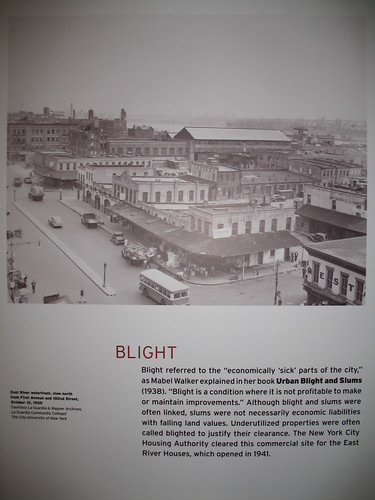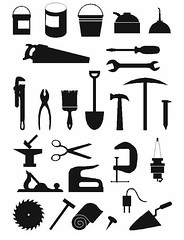A case in Gloucester, Massachusetts as an illustration of the need for systematic neighborhood monitoring and stabilization initiatives: Part 4 (the Curcuru Family)
-- "The need for a "national" neighborhood stabilization program comparable to the Main Street program for commercial districts: Part I (Overall)"
-- "To be successful, local neighborhood stabilization programs need a packaged set of robust remedies: Part 2"
-- "Creating 'community safety partnership neighborhood management programs as a management and mitigation strategy for public nuisance programs: Part 3 (like homeless shelters)"
-- "A case in Gloucester, Massachusetts as an illustration of the need for systematic neighborhood monitoring and stabilization initiatives: Part 4 (the Curcuru Family)"
-- "Local neighborhood stabilization programs: Part 5 | Adding energy conservation programs, with the PUSH Buffalo Green Development Zone as a model," 2021
-- Elm Street program, Pennsylvania Downtown Center
-- Elm Street Managers Handbook
-- Chambersburg Elm Street Neighborhood Plan
Part 2 discusses packaging a set of remedies, so the programs can act expeditiously.
To do that programs need to collect data and information and create maps showing the condition and state of properties, and identify potential solutions, including organizing community volunteer and self help/DIY initiatives such as the "Paint Ypsilanti" initiative that helped residents in the Depot Town neighborhood, when their houses were in need of a new paint job.
Rebuilding Together. The piece mentioned the Rebuilding Together organization, which has local chapters that assist people without the means to do so to make necessary repairs on their houses.
I attended their national conference in 2013 ("One element typically ignored in housing policy: helping low income families stay in their homes via repair assistance").
The organization terms April as "National Rebuilding Month" (the organization used to be called "Christmas in April"), and encourages affiliates to focus their service efforts then, culminating in "National Rebuilding Day," held on the last Saturday in April.
A project underway by Rebuilding Together Manchester in Connecticut. Photo: Bob Kiefer.
Local affiliates may or may not have full time staff, but the bulk of the work is done by volunteers, both amateur and professional.
Funds tend to be a mix of government grants and locally raised donations, depending on the group.
Affiliates with paid staff tend to undertake more projects and do projects throughout the year, rather than just in April.
One focus is the installation of ramps for the disabled, which chapters tend to do all year, not just in April.
Manchester, Connecticut.
More recently, rather than focusing on one-off projects, some RT chapters have started focusing each year's activity on particular neighborhoods, repairing dozens of houses at the same time, having a multiplicative impact on neighborhoods, going beyond that of a focus on individual houses.
Each year, collectively the chapters repair over 10,000 houses with the involvement of as many as 100,000 volunteers, with an equivalent value of around $100 million.
Neighborhood Housing Services. In some respects you can argue that RT is a "self-help/DIY" version of the public program Neighborhood Housing Services, a program created by Congress in the 1960s, that many cities adopted to do similar kinds of work.
Through hundreds of programs across the nation, public and/or nonprofit agencies provide grants and other repair and housing rehabilitation services to people in need, mostly using public funds from HUD community block grants.
-- Maryland NHS webpage
-- "Neighborhood Housing Services: A Program with Promise," Vanderbilt Law Review, 1976
-- "Redlining Practices, Racial Resegregation, and Urban Decay: Neighborhood Housing Services as A Viable Alternative," The Urban Lawyer, 1975
-- "Building a Better Neighborhood Housing Partnership," Housing and Society, 2007
The programs may target households in terms of income eligibility as well as specific neighborhoods. Some programs have energy-related initiatives and/or offer technical assistance workshops on topics such as foreclosure or home buying.
Also, many cities and counties, often in conjunction with senior aging programs, have created focused programs to provide such services to older-aged households.
The note that the Curcuru family received July 20 telling them their house is an “eyesore.” (Photo here and below: Michelle Baran)
The difference between Neighborhood Housing Services and initiatives like Elm Street and Rebuilding Together. To make clear, while NHS type programs are important, what this series recommends is the support of initiatives that are more directly intertwined with civil society supportive elements.
The difference between the Main Street model and the community development corporation model is that non-professional citizens/residents are incorporated into the organization as members, volunteers, and leaders.
Gloucester, Massachusetts and the Curcuru family. The Washington Post has an article, "A couple was shamed for their aging house. Hundreds of people stepped in to help spruce it up," about the Curcuru Family in Gloucester, Massachusetts, and how the health and income challenged family hasn't been able to keep up their house in good condition.
The house, long in need of painting, was called out as an eyesore in an anonymous missive. Once this was disclosed in a Facebook post, the family received many offers of help and the house will be repainted.
Obviously, the house needs to be painted. Anyone can see that's the case.
But the state of disrepair should have been seen as an indicator of the need for help, rather than as an opportunity for anonymous shaming.
A long time ago, a colleague made the comment that the reason that there are so many lawyers is because people are unwilling or not very good at engaging with other people to deal with problems and differences, so they need third party intermediaries.
Another way to think of organized stabilization initiatives is as a friendly third party intermediary.
By collecting data, making assessments, and organizing a system of help, it's possible to deal with this kind of issue as a conversation rather than as through anonymous accusations and shaming.
Note that Gloucester has a housing rehab support program, but it's got a long waiting list. And judging by the Post article, it's probably not particularly proactive in identifying houses of particular need.
The advantage of creating initiatives like an Elm Street neighborhood stabilization program or Rebuilding Together is that they draw on a wider variety of resources, including volunteers, than is typically possible through a staff-driven city agency.
Columbus Ohio and the Old Towne East neighborhood. In Part 1, I mentioned the 2003 documentary "Flag Wars," about the demographic change--"gentrification"--of a neighborhood close to the Downtown of Columbus, Ohio.
The footage was mostly shot in the late 1990s.
-- Discussion Guide
The neighborhood is marked by huge houses, and had a preponderance of older black families, mostly low income.
Like the state of the Curcuru house in Gloucester, many of the houses were in disrepair, which of course is why some people were motivated to buy there--houses were cheap, big, and well located, and sweat equity could generate a great financial return.
Vacant houses in Olde Town East. Wikipedia photo by Zhao 737.
So many of the houses are so large, that keeping them up would be a challenge for all but higher income households (e.g., in the last year, repairs and appliance replacement at our small bungalow in DC have already totaled over $4,000, and I wish we'd put some more money into landscaping).
Instead of looking to creating "mutual assistance programs" to help economically challenged households, many new residents profiled in "Flag Wars" called on the city's Code Enforcement inspectors to ticket and fine the homeowners.
Needless to say, this created animus ("‘Flag Wars’ Helped Me See Systems Of Racism In Housing And Its Effects On My Own Family," Columbus Navigator).
While it's taken a couple decades, apparently, these days, the neighborhood has "arrived," at least pre-pandemic, judging by last summer's historic house tour ("Olde Towne East home tour to feature the old, new, grand and sleek," Columbus Dispatch).
The Olde Towne East historic home tour features condominiums currently under construction at 1369 Fair Avenue. Pictured are owner Misty Linn (L) and her partner Katie Kikta (R). Tour organizers say the event illustrates the variety and health of the area's housing. Photographed on Tuesday, July 2, 2019. [Barbara J. Perenic/Dispatch]
Manor Park DC and the Albright Memorial Methodist Church. An ongoing theme in writing about cities is the decline of churches as older church-going residents move to the suburbs.
As church congregations shrink, the ability to maintain buildings diminishes, especially as buildings age, and that is the case with the Albright Methodist Church on Rittenhouse Street NW in the Manor Park neighborhood (between Takoma and Brightwood).
Comparable to the letter received by the Curcurus, a resident living across the street from the church complained about their failure to maintain the roof, that tarps continued to cover part of the roof for many years, that it is an eyesore etc.
It's not that the church didn't know about the problem, but they spent many years raising the necessary funds to fix it.
He could have talked to them, and he could have even volunteered some of his time and energy to helping them facilitate and speed up the repair. I guess the saving grace was that he didn't do it anonymously. But in any case, most of the discussion on the list was more about defending the church.
That was a few years ago, and I seem to recall that the roof has finally been fixed.
While churches typically aren't eligible for government funds for repair (see the First Amendment), some historic preservation organizations do provide assistance to churches in these situations, sometimes with the support of the national organization Partners for Sacred Places.
Labels: civic engagement, neighborhood planning, neighborhood stabilization, participatory democracy and empowered participation, public service/volunteering/donations, self-help/DIY, urban design/placemaking

























